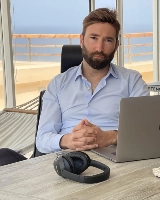What Unconventional Methods Do Real Estate Agents Use to Assess Property Potential?
RealEstateAdvice.net

What Unconventional Methods Do Real Estate Agents Use to Assess Property Potential?
Diving into the less conventional tactics of property evaluation, we've gathered insights from seasoned CEOs and real estate investors. From maximizing rental income by focusing on bedrooms to analyzing local cultural trends and sustainability, explore the five unique methods they've successfully employed to assess real estate potential.
- Maximize Rental Income with Bedrooms
- Assess Net Migration and Franchise Presence
- Uncover Hidden Value with Historical Photos
- Utilize Rooftop Solar for Income and Tax Benefits
- Analyze Local Cultural Trends and Sustainability
Maximize Rental Income with Bedrooms
As a real estate investor with a seven-figure portfolio, one unconventional method I use to assess a property's potential is looking at how easy it would be to convert extra rooms into bedrooms. The reason? I use the rent-by-the-room model, so maximizing the number of bedrooms in my rental properties significantly increases my income.

Assess Net Migration and Franchise Presence
One unconventional method I've used to assess the potential of a property is to assess the net migration into that particular area, as well as whether McDonald's and Burger King have locations in that area. Net migration into a particular neighborhood is one way to see whether there is a catalyst that may make one neighborhood appreciate more than others. This can be used on a statewide scale as well to see which states may be worth investing in most. When it comes to assessing McDonald's and Burger King, these two companies will typically put locations into areas that have the most potential and are ultimately transitional neighborhoods. Transitional neighborhoods end up being those that may not be the nicest today; however, they are starting to become nicer areas of town, development is happening, and the perception of these areas is changing.

Uncover Hidden Value with Historical Photos
As a real estate investor, I'm always looking for creative ways to evaluate the potential in properties. One trick I've used that has really helped me see hidden value is tracking down old photos of the property online or in library archives. Seeing what a place looked like in its prime gives me clues about its good bones and past grandeur that may be obscured by its current condition. People tend to focus on what's in front of them, but I've found that seeking out a property's past provides unique insight into what it could become again with the right improvements. A little historical perspective reminds me not to simply judge a book by its cover in this business.

Utilize Rooftop Solar for Income and Tax Benefits
One of the most underutilized assets of investment properties today is the property's rooftop surface. One of the investment groups I work with is AKA Partners, which incorporates solar collection built into their self-storage and multifamily properties. The solar equipment is placed on covered parking, serving the dual purpose of rentable shade ports and support structures for the solar panels. The power generated offsets operating costs, improving net operating income, and the rental income from the shade ports increases gross operating income. The additional benefit to investors is the solar tax credits and accelerated depreciation on the shade ports, increasing post-tax yield. The combined components provide the best return on investment when compared to other improvements.

Analyze Local Cultural Trends and Sustainability
One unconventional yet highly effective method we've employed in assessing the potential of properties is through the analysis of local social and cultural trends. Beyond the traditional financial and market analysis, we delve deep into the fabric of the communities where the properties are located. For example, in a vibrant urban neighborhood, we take into account the rise of local art galleries and innovative startups. By understanding these trends and their impact on the local economy, we can identify areas poised for growth and investment.
Additionally, we've integrated sustainability and environmental factors into our property assessments. We explore the potential for eco-friendly upgrades. By considering the long-term benefits of these green initiatives, we reduce operational costs and attract environmentally-conscious tenants and investors. This approach aligns with our commitment to responsible real estate investments while creating value for our clients and the environment.
